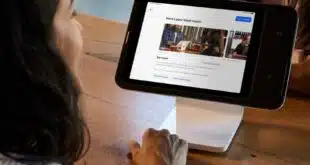Fiserv Inc., a Brookfield, Wis.-based bank core processor, says its Popmoney peer-to-peer money-transfer service will get a tweak later this year to enable recipients to go directly to an ATM to retrieve funds.
Currently, funds sent via Popmoney must be deposited into an eligible account. The new service, dubbed Popmoney Send Cash, will use tokens and a software update to ATMs that use Fiserv’s Accel debit network. Popmoney Send Cash will enable users to proceed directly to an ATM to retrieve their cash, bypassing the deposit step, says David Keenan, Fiserv senior vice president of network solutions.
“Our financial lives are getting faster and more complex. The needs for cash are not going away,” Keenan says. “And the need for faster, better access to cash is very critical.”
With Send Cash, a sender initiates a P2P transfer using Popmoney. The recipient receives a text or email notification of the transfer. The sender also provides an 11-digit passcode the recipient will need at the ATM.
Upon arrival at a Popmoney-enabled ATM, the recipient enters the passcode after pressing the Popmoney button on the ATM display. Keenan expects the Fiserv service to be available at approximately 30,000 ATMs by yearend, which, after a software update, will have a Popmoney button displayed on the screen. Upon successful entry of the passcode, the cash is dispensed. No card is necessary.
Popmoney Send Cash uses tokens to represent the actual transfer. A token for a specific transaction is made available on the Accel network, enabling the recipient to use a participating ATM.
The tokens also have a role in Fiserv’s card-free ATM transaction service. In this scenario, a financial institution creates a token based on the customer’s request. It can be limited by time, a date range, or amount, Keenan says. In one example, a consumer who lost or misplaced his debit card but needs cash could use the financial institution’s mobile app to initiate a cardfree ATM transaction. The bank supplies a passcode, which is entered into the ATM. The bank knows the code was delivered to an authenticated user when it is entered at the ATM.
“Consumers are increasingly preferring to do things through their mobile devices, given their on-the-go lifestyles,” Keenan says. Mobile phones will become more of the front-end technology involved in getting cash, he says.





